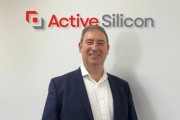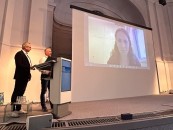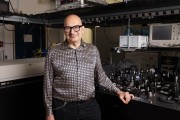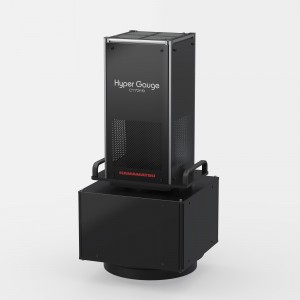
In this interview, Antonio Castelo, EPIC’s Technology Manager for Bio-Medical and Lasers, talks to Heiko Brüning, co-founder and CEO of QubeDot, a German manufacturer of customized InGaN-based microLEDs and microLED-displays for high optical performance and switching speeds.
What’s the background to you co-founding QubeDot as CEO?
After studying a Dipl.-Ing. in Mechanical Engineering in Munich, I did a PhD on Micro Laser Processing at the University of Bremen. I’d always had the idea of going into industry and setting up my own business so I could transfer my research into something useful for the real world. So, in parallel to my PhD, I did an MBA - an area I felt had been sadly neglected in my technical studies. This was a great experience as apart from giving me an insight into the business side of things it gave me the opportunity to meet people from a much wider range of backgrounds than I’d been used to while studying and doing research.

After my PhD, I worked in industry for a mid-sized company. Then, in 2018, by chance I met Professor Andreas Waag, Head of the Institute of Semiconductor and Technology (IHT) at the Technical University of Braunschweig, who was interested in launching a startup in the field of quantum technology. I discussed the idea with a colleague and long-time friend Jan Gülink, who had a lot of experience in processing gallium nitride, and in 2019, we co-founded QubeDot as a spin-off of IHT in Braunschweig.
Our aim was to produce customised microLEDs (μLEDs) based on gallium nitride (GaN) technology, which, compared with conventional LED fabrication, enables much smaller light sources - about the width of a strand of hair- together with higher precision and efficiency. We were confident that with these features, our technology would be in high demand for a range of applications in industries such as displays, metrology, biology, microscopy, and optogenetics.
How has the company developed?
Over the past four years, our work force has grown to 10, and we’ve developed a range of microLEDs and microLED arrays on a single chip with nanometre lateral positioning tolerance. To make it easier for customers to integrate our products, as part of an EU project, we’ve created what is called a SMILE platform, which stands for structured micro illumination light engine. It’s basically a very small LED array with 8 x 8 microLEDs in new star housing connected with a USB port. The device is driven with a small graphical user interface (GUI) to enable the customer to create their own micro patterns or whatever is desired for a diverse range of displays in a variety of sizes and application areas.
However, due to a large customer demand, we also provide a foundry service for customising GaN based chips via lithography, dry & wet etching techniques, passivation layers, contact and mirror metallizations.
Another of our services is semiconductor analysis using our technical measuring equipment to determine a range of phenomena including time resolved cathodoluminescence, µPhotoluminescence, energy-dispersive X-ray spectroscopy, and electrochemical capacitance-voltage.
How did you find your first customers?
We started off cold calling by phone, telling prospective customers that we could provide customised microLED solutions starting at small quantities. This was totally new to the market because back then, you could only go to the big players and take what they had in stock in large quantities. Accordingly, our offer of a customized solution starting at very small quantities was very well received and it opened the door for us to get into this niche market.
We also set up social media accounts where we regularly post news to increase the company profile and attended trade fairs like Hannover Messe and Photonics West. In May 2024, we will participate in SID Display Week in San Jose, as well as Analytica in Munich to promote our microscopy solutions.
What are your main regional markets?
We sell mainly in Europe and the US. Although Asia is potentially an important market for us, we decided to focus first on achieving a good penetration in Europe and the US because I feel that at this early stage of development, it’s important for us to be geographically close to our customers.
What are your main current challenges?
While there are no problems on the market or demand side, we have to align customer demand with our current capabilities, and in this connection, the two biggest challenges we face at the moment are finding the right team members to support our rapid growth and securing funding for more machinery.
How do you see the future?
Overall, I’m very happy with the progress that’s been made so far, and it’s been fantastic to see the enthusiasm that the whole team puts into the daily work of the business. I will be happy if we can continue in the same way, but as I previously mentioned, we will soon need to extend our clean room facilities to produce increasing numbers of microLED wafers and microLED displays for our customers. Until now, we’ve grown organically, but this type of expansion will require external investment.
If you started again, what would you do differently?
It would probably have been beneficial if we had extended our production facilities two years ago because lead times for machinery can be up to two years or even longer. Thus, we would have had the chance to produce higher capacity already at current stage.
What’s your advice for the next generation of entrepreneurs?
I think it’s important to be really passionate about what you want to achieve - not only about the product and the technology but also the market. You might think you have the very best and brightest product for the market, but it won’t be successful if it doesn’t meet the market’s requirements.
So, it’s crucial to keep one eye on the technology and the other eye on the market by going out as early as possible and talking to potential customers. Do they understand what you want to sell them? If yes, take a closer look at the equipment you need to produce your product and who can provide it. Once you figure that out, it’s important to build a relationship with both the customer and the supplier.
Written by Antonio Castelo, EPIC’s Technology Manager for Bio-Medical and Lasers,




































 Back to Features
Back to Features



























